Marines in an experimental infantry battalion in North Carolina recently tested 7-inch-long drones that can be fired from a grenade launcher that can do surveillance or run suicide missions with precision strike accuracy at close range.
Photos and video of the Marines of 1st Battalion, 2nd Marine Regiment, out of Camp Lejeune, North Carolina, showing them testing the Drone 40 and the Switchblade drone at a Lejeune range in early July were released by the Corps.
Earlier in 2021, British soldiers were using a surveillance variant of Drone 40, made by Defendtex, an Australian company, in Mali, Africa, on missions, The Drive reported. Though the British military were using them via hand-launched versions rather than in their grenade launchers, at the time.
RELATED

The Defendtex Drone 40 has a GPS-based autopilot system that can be fired from a grenade launcher or put aloft by hand, according to the company website.
It’s a reusable device and can has a quick-field change payload bay for a variety of drone-based packages, according to the website.
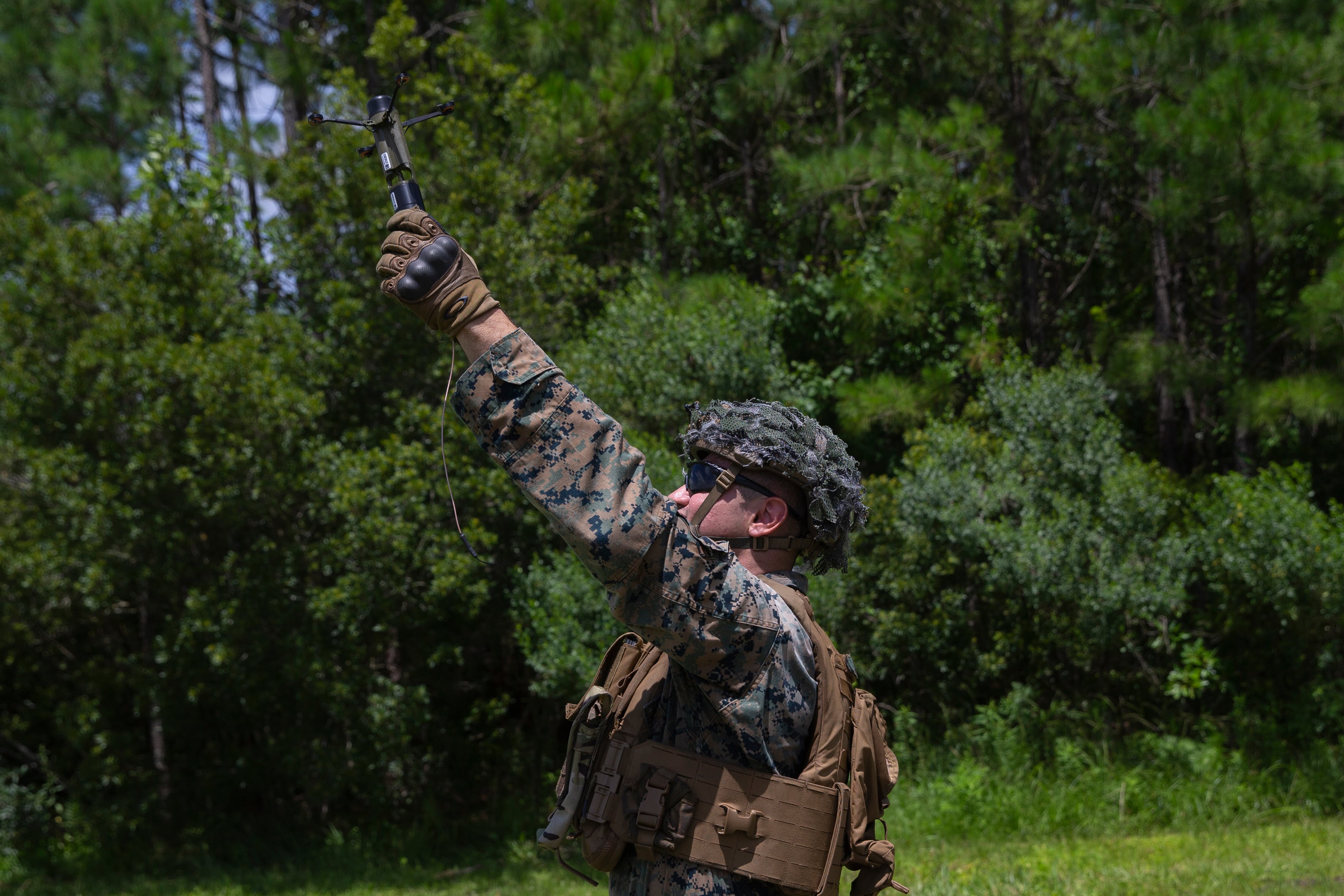
The drone weighs less than half a pound, once launched it extends to 7 inches, can fly for 30 to 60 minutes and has a maximum range of 20km.
Current payloads include surveillance, electronic warfare, kinetic, smoke/flash and laser designator, according to the company website.
Marines in the published photos were launching the drone by hand and retrieving the device with a net system for reuse.
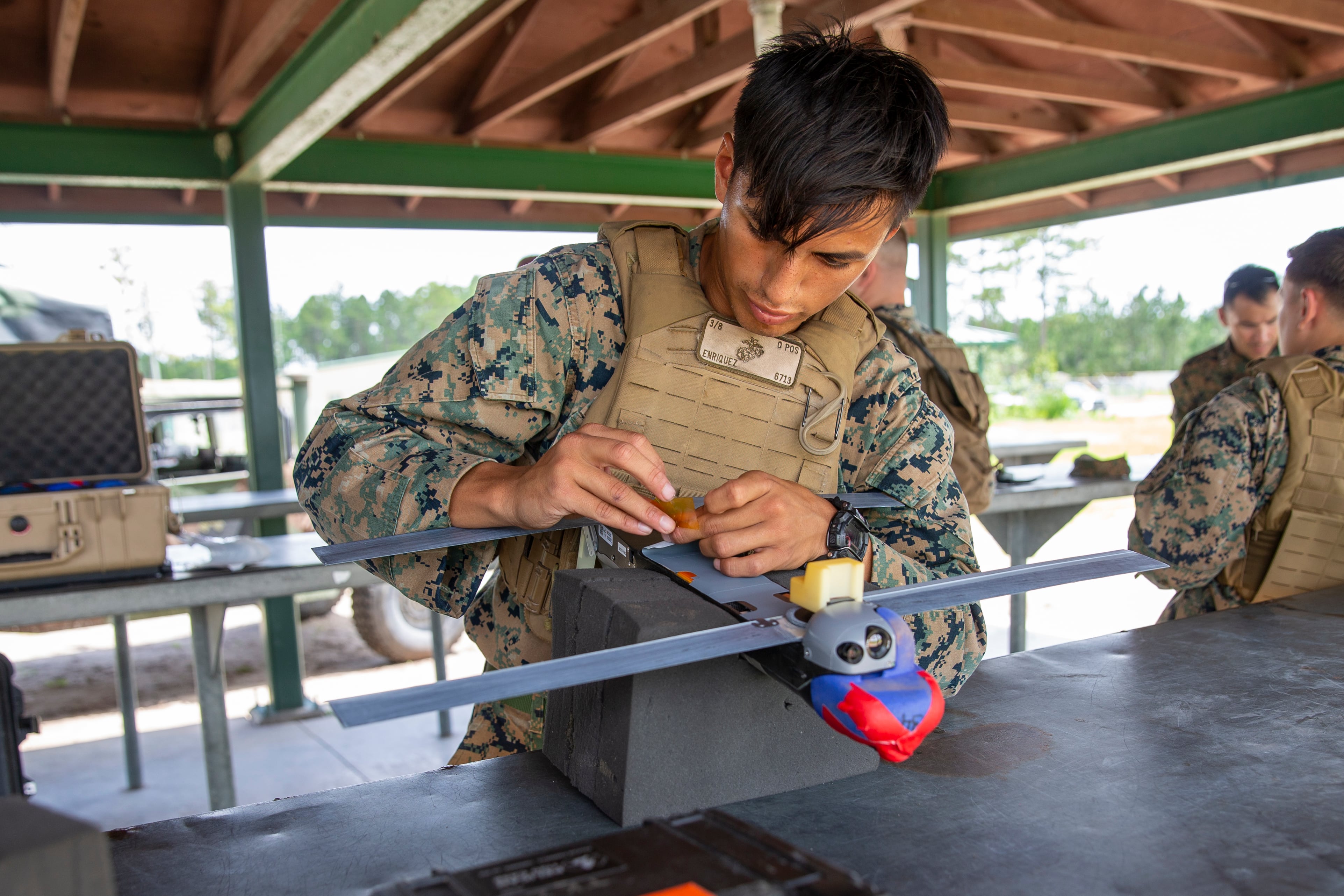
The Marines are upgrading their grenade launching capabilities by fielding the M320 standalone grenade launcher for better accuracy than the old M203 launcher that was attached beneath the barrel on an M16A2 service rifle.
The Corps publicly began the search for a tube-launched drone that could surveil or serve as a loitering munition back in 2018, Marine Corps Times previously reported.
The request back then was for a drone that could conduct fire support at distances of 40-60km and be used in all operating environments.
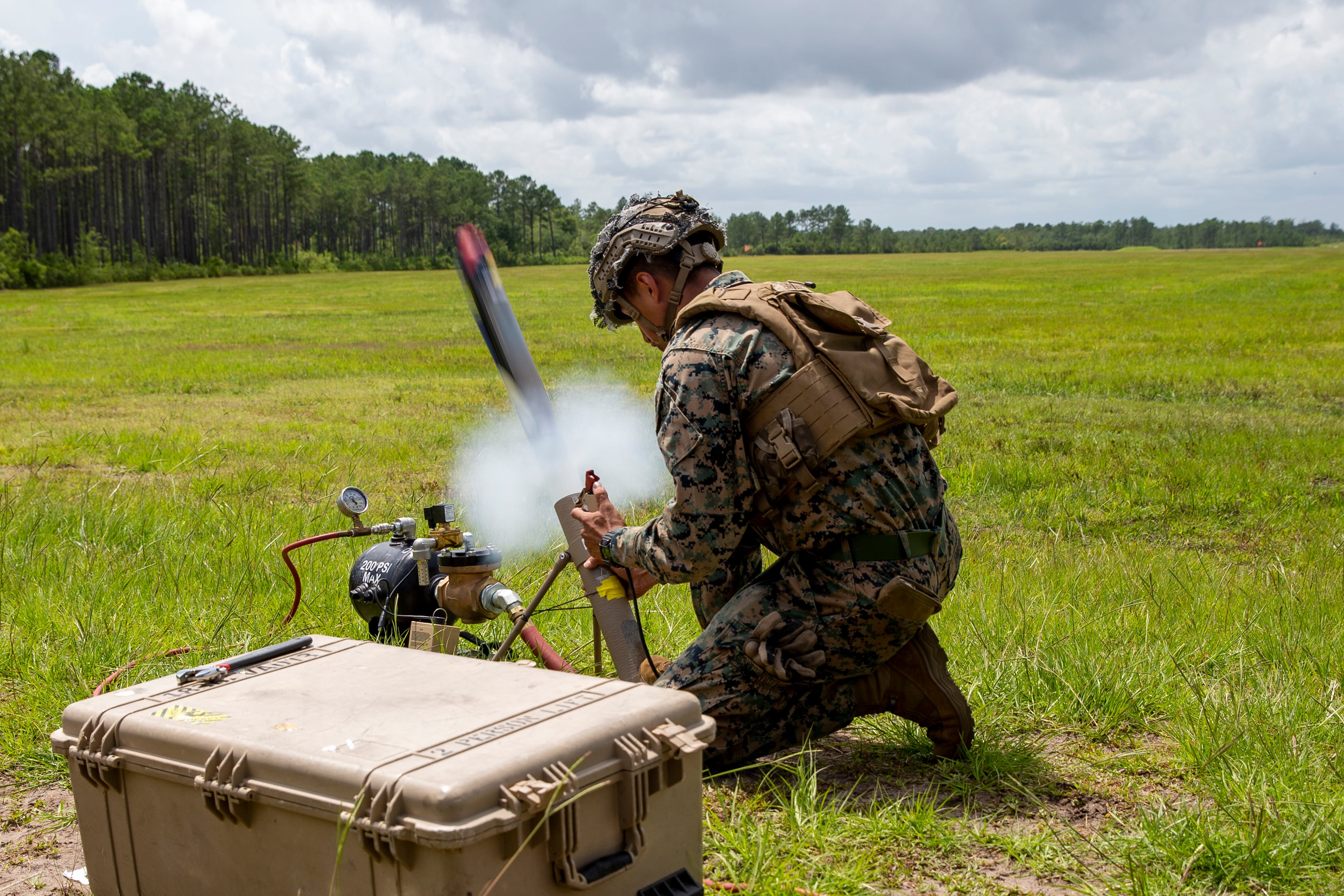
The same proposal wanted secure communications links and GPS-enabled for operators to guide the drone between 25 to 60km away.
The other drone, the Switchblade by AeroVironment, has been in use by U.S. military for more than a decade, first coming into use by U.S. Air Force Special Operations and later going under contract for use by the Army in 2011, Military Times sister publication C4ISRnet reported in 2015.
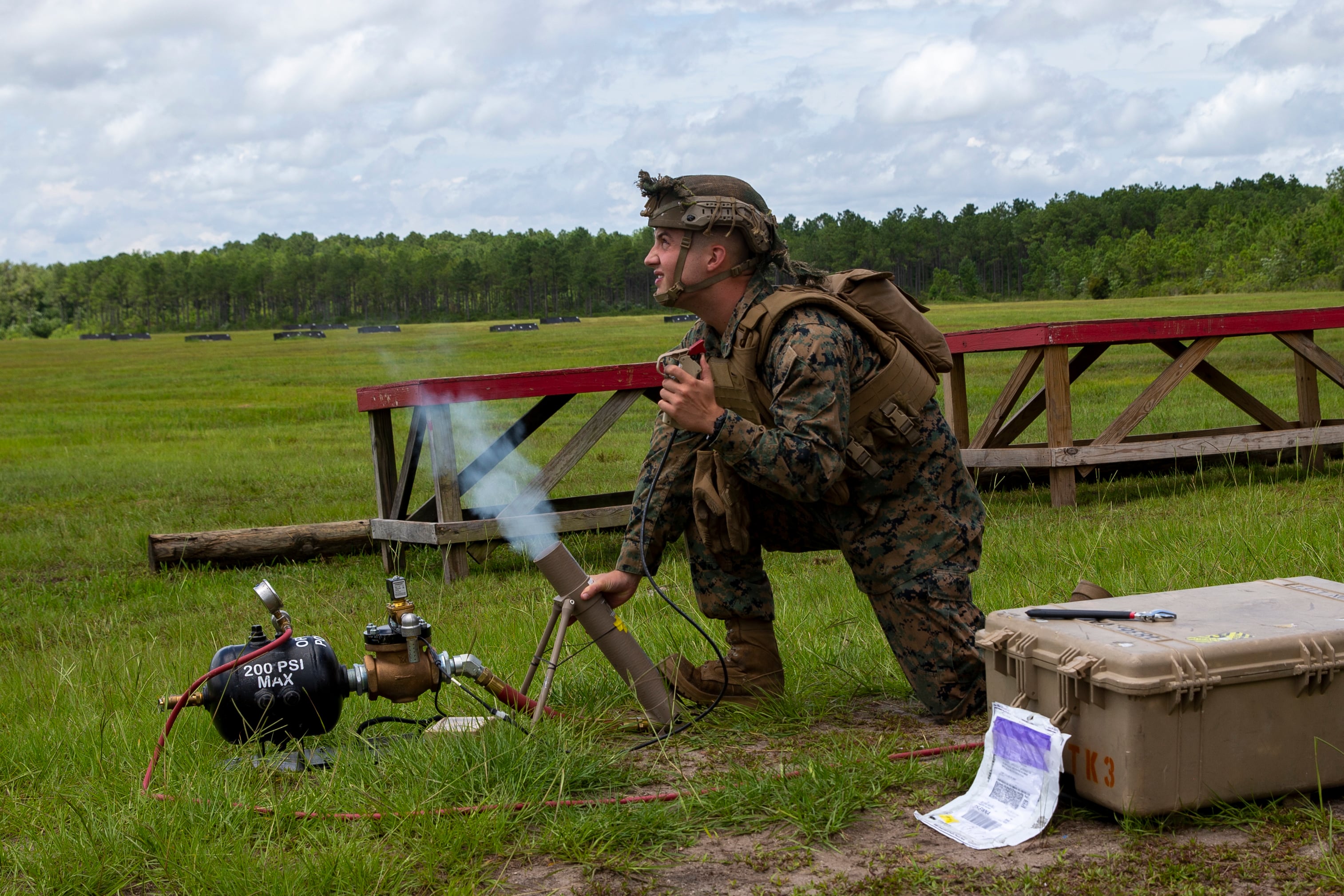
Not quite man-packable, but Defendtex also makes the Drone 155. That drone is, you guessed it, launched from a 155mm artillery tube. It weighs 20kg or more, depending on the payload and flies for up to two hours at a range o f 80km, according to the company website.
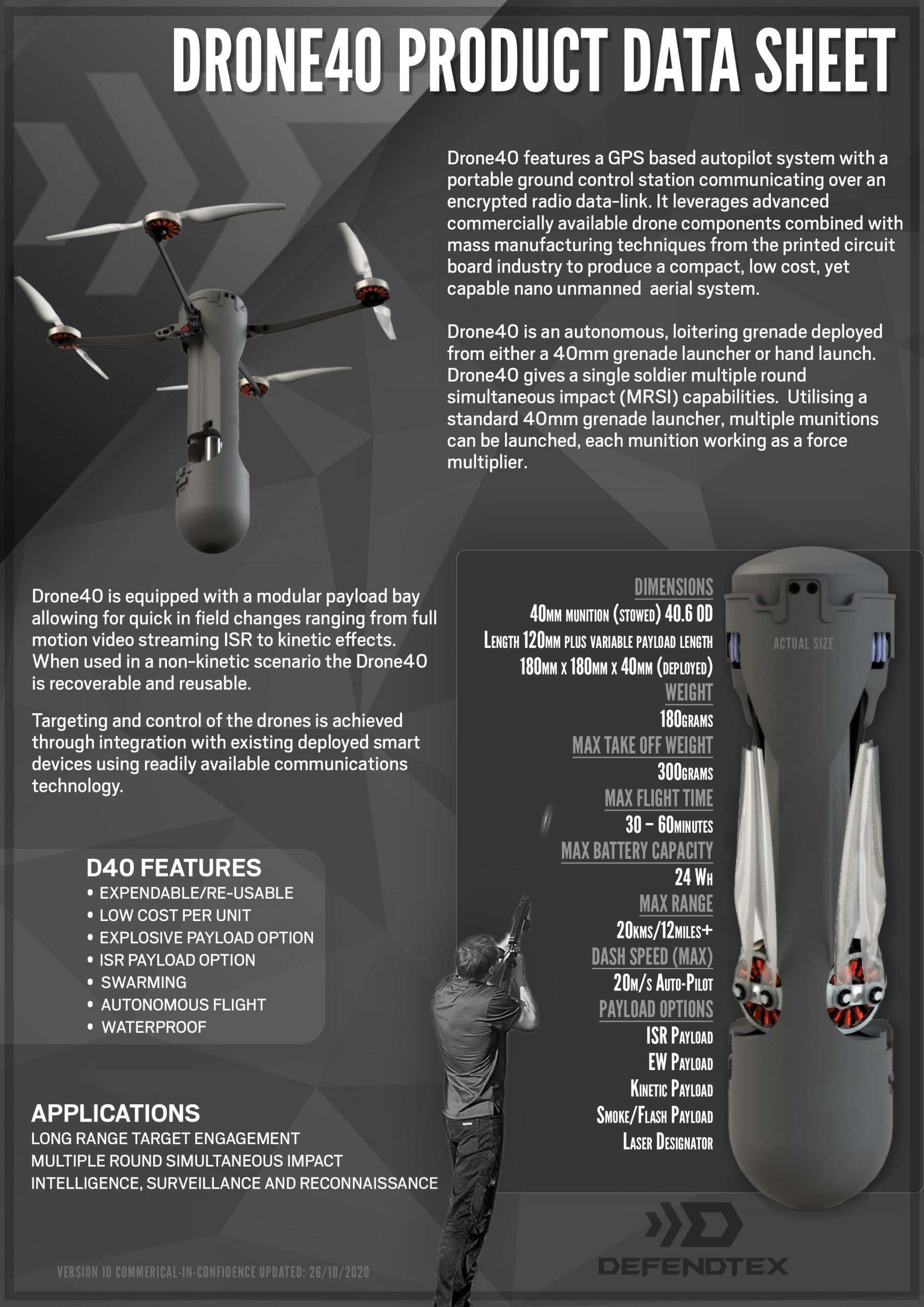
Todd South has written about crime, courts, government and the military for multiple publications since 2004 and was named a 2014 Pulitzer finalist for a co-written project on witness intimidation. Todd is a Marine veteran of the Iraq War.




